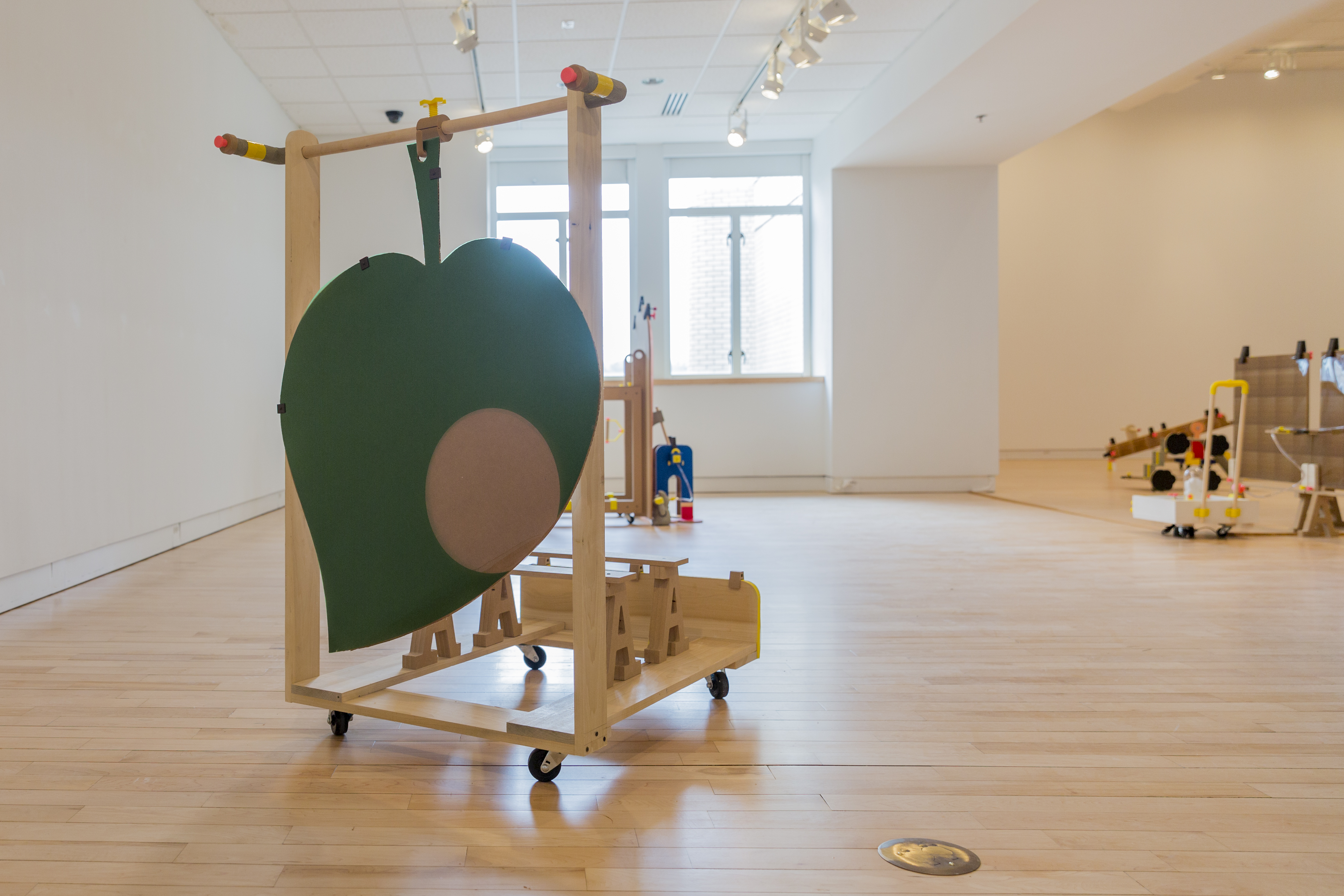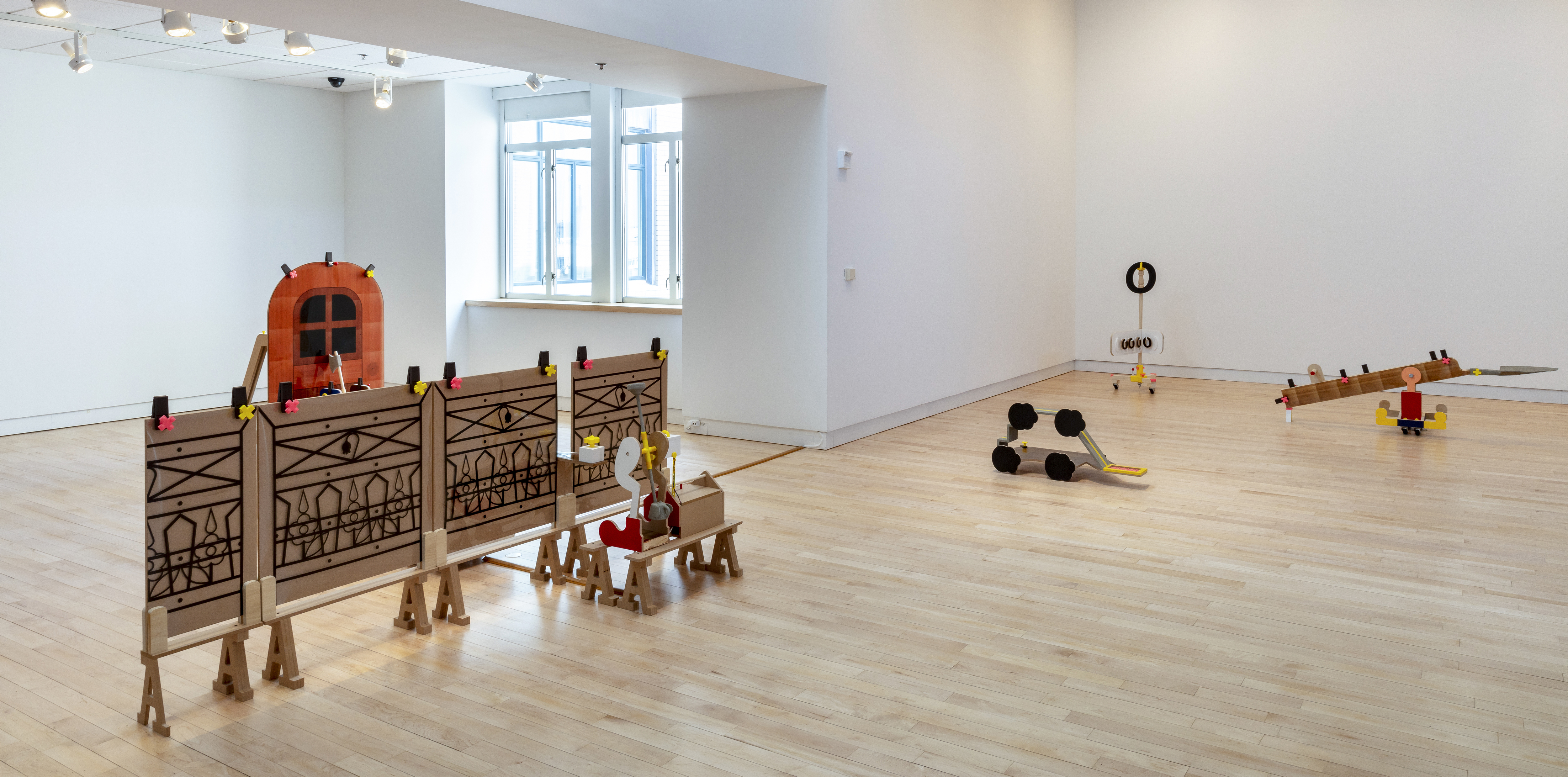
my playbench in the workground
2021
research project and installation
2021
research project and installation
03/17/2021 - 04/02/2021
installation created for the group exhibition “Friends Forever: 2021 MFA Exhibit” at Miller ICA
press
GAMESCENES
the research

the game log
In mid-March 2020, as lockdown policies gradually were imposed around the world due to the coronavirus pandemic, I was forced, along with millions of others worldwide, into isolation in my tiny apartment. Around the same time, on March 20th, the life simulation video game Animal Crossing: New Horizons was released for the Nintendo Switch game console.
In the game, the gamer assumes a human cartoon character who moves to a remote deserted island with the aim of transforming it into a "personal paradise" inhabited by both the gamer in their cartoon human guise and a group of anthropomorphic animal characters. In the game, day passes in real time, and seasons change with the calendar. The gamer can carry out various activities like gardening, bug catching, fishing, fossil hunting, among others; the gamer is also free to decorate their house and the island using items acquired from trading or crafting. The game also offers terraforming features that give the gamer capacities to further sculpt the island.
I entered this game as a video game newbie, searching for both a reprieve from anxiety and an alternative site for structural life and art-making. On May 17th, 2020, I landed on my very own "virtual island" for the first time and began my getaway adventure in the world of Animal Crossing. On May 21st, the fifth day I was in the game, I decided to start an Excel data table as a game log to document my game acts and activities in the game, primarily as a way of keeping track during a time when days had melted into a shapeless slurry. In this log, I recorded the time I spent in the game and all sorts of gaming activities, including non-player characters I interacted with, fish and insects I caught, fruits I picked, game currencies I earned and spent, trips I made to other gamers' islands, items I crafted or traded, gifts I received, etc.
In the end, I played the game for one whole year (365 days) without missing one single day. Thus, I have one whole year of my gaming data documented on the spreadsheet. When looking back at my game log these days, I noticed that some patterns started to emerge, and I became curious about these patterns and about potential meanings, motivations, and implications hidden behind them.
Primarily working as a sculptor in my studio practice, I started to create sculptural objects to help me explore and understand my gaming patterns and present my discoveries. In a way, I am using these objects to construct a system or a network that enables me to reiterate my gaming experience using my own artistic language and to contemplate the connections between my idiosyncratic narratives and the world beyond the game. I am also using these objects to help me better understand my role and position as an artist living and working in a world where we are all constantly navigating back and forth between digital and physical contexts.
In the game, the gamer assumes a human cartoon character who moves to a remote deserted island with the aim of transforming it into a "personal paradise" inhabited by both the gamer in their cartoon human guise and a group of anthropomorphic animal characters. In the game, day passes in real time, and seasons change with the calendar. The gamer can carry out various activities like gardening, bug catching, fishing, fossil hunting, among others; the gamer is also free to decorate their house and the island using items acquired from trading or crafting. The game also offers terraforming features that give the gamer capacities to further sculpt the island.
I entered this game as a video game newbie, searching for both a reprieve from anxiety and an alternative site for structural life and art-making. On May 17th, 2020, I landed on my very own "virtual island" for the first time and began my getaway adventure in the world of Animal Crossing. On May 21st, the fifth day I was in the game, I decided to start an Excel data table as a game log to document my game acts and activities in the game, primarily as a way of keeping track during a time when days had melted into a shapeless slurry. In this log, I recorded the time I spent in the game and all sorts of gaming activities, including non-player characters I interacted with, fish and insects I caught, fruits I picked, game currencies I earned and spent, trips I made to other gamers' islands, items I crafted or traded, gifts I received, etc.
In the end, I played the game for one whole year (365 days) without missing one single day. Thus, I have one whole year of my gaming data documented on the spreadsheet. When looking back at my game log these days, I noticed that some patterns started to emerge, and I became curious about these patterns and about potential meanings, motivations, and implications hidden behind them.
Primarily working as a sculptor in my studio practice, I started to create sculptural objects to help me explore and understand my gaming patterns and present my discoveries. In a way, I am using these objects to construct a system or a network that enables me to reiterate my gaming experience using my own artistic language and to contemplate the connections between my idiosyncratic narratives and the world beyond the game. I am also using these objects to help me better understand my role and position as an artist living and working in a world where we are all constantly navigating back and forth between digital and physical contexts.
The installation my playbench in the workground is part of this exploration for me to make sense of my gaming experience and my ethnographic research in the life simulation games. These seven objects in this installation specifically focus on the complex interplay between play and labor through the lens of both the digital and physical tools I have been using in the game and in my real life. By reimagining and reinterpreting these tools, I am creating a personal ontology of the relationship between play and labor in my virtual and physical life and applying such ontology to help me better understand a more extensive social condition in which the boundaries between play and labor are increasingly blurred, resulting in an ever-exploitative logic in the late capitalism burnout culture. Through creating this body of work, I am also reflecting upon the labor in an artist studio and my participatation in the labor structure beyond the studio.
the installation
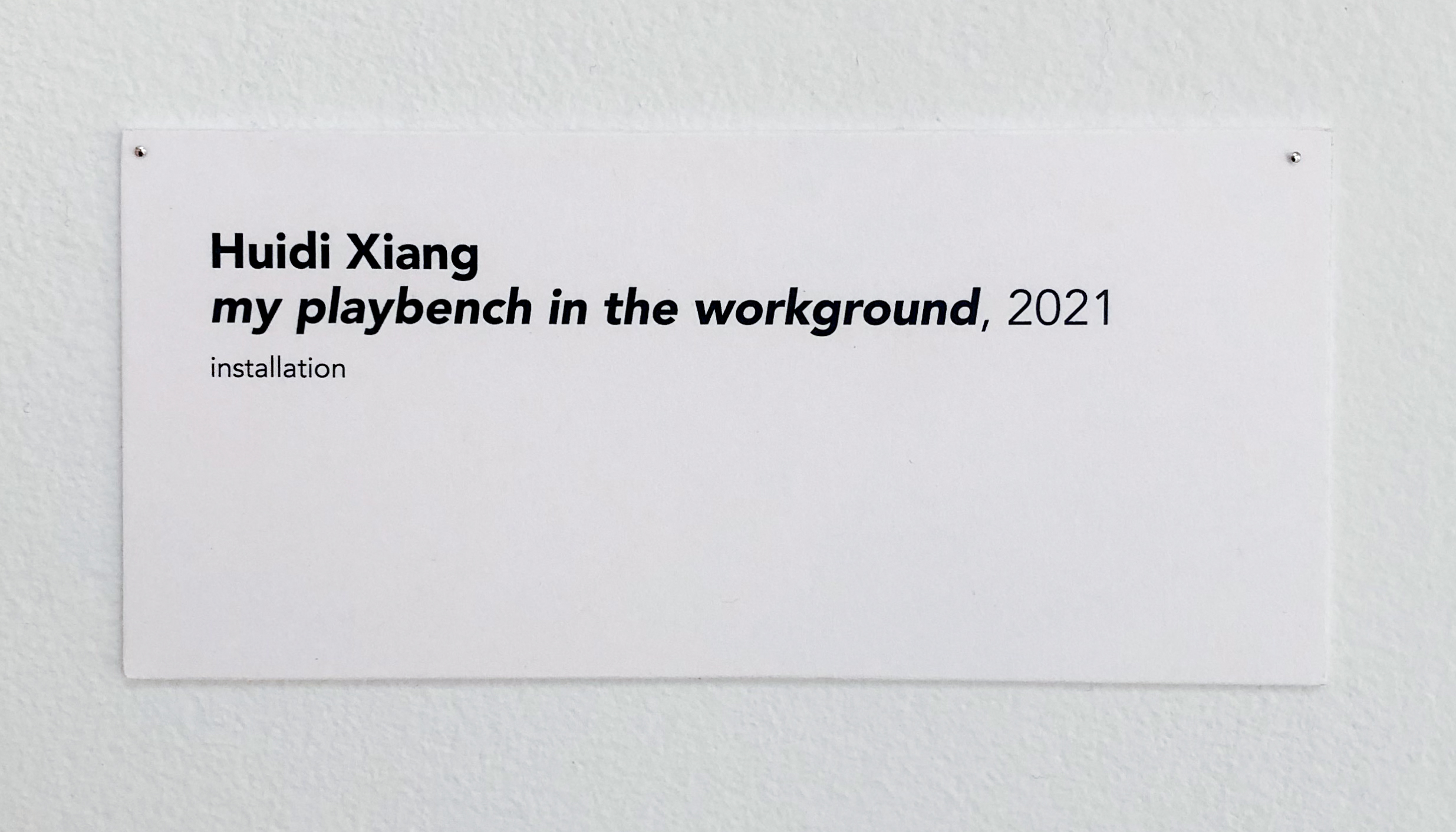
This bird chirping sound is part of the installation and is played on loop in the gallery while it is open. Before a viewer actually enter the gallery on the third floor, they can hear this sound in the elevator.

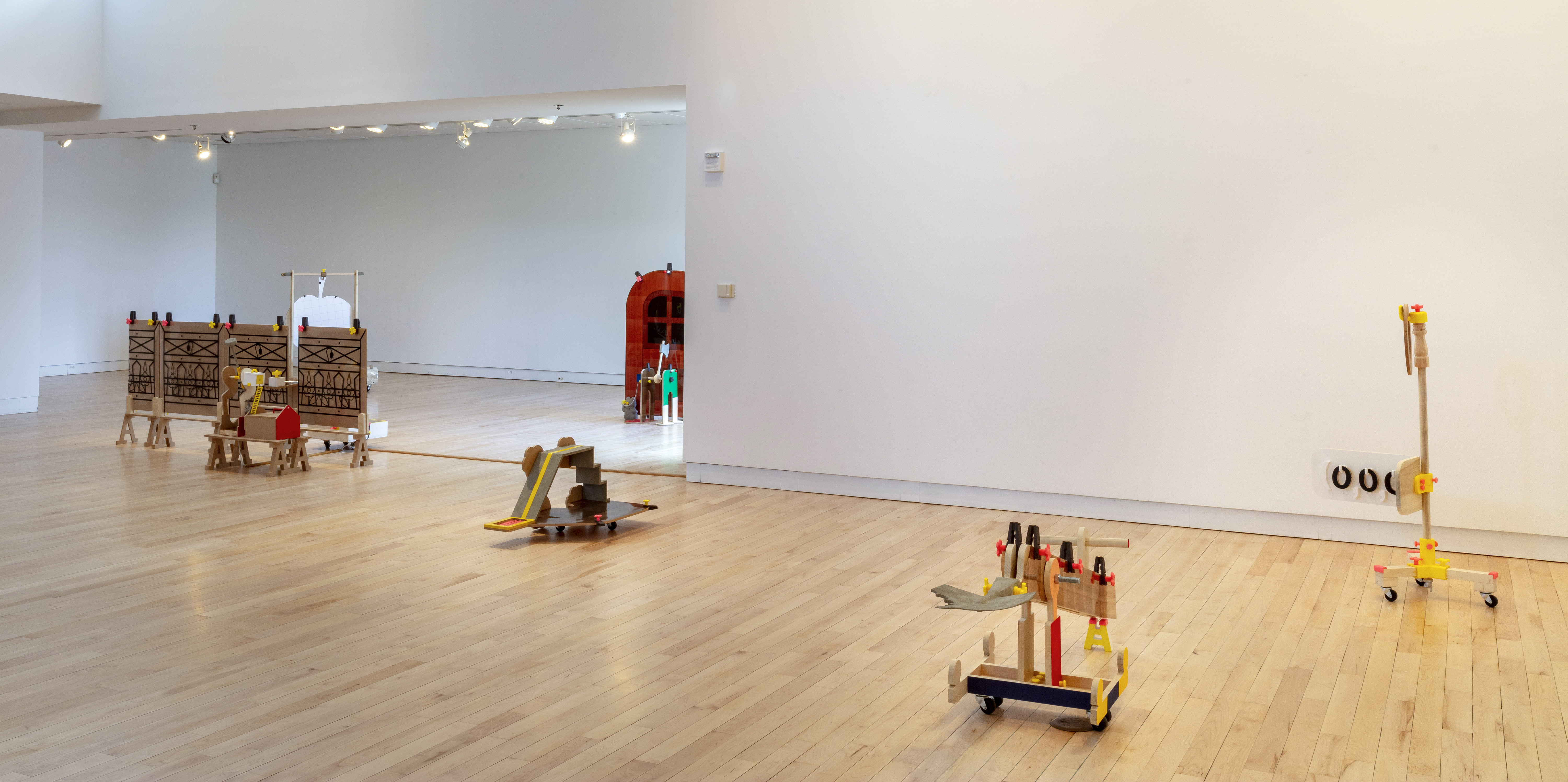
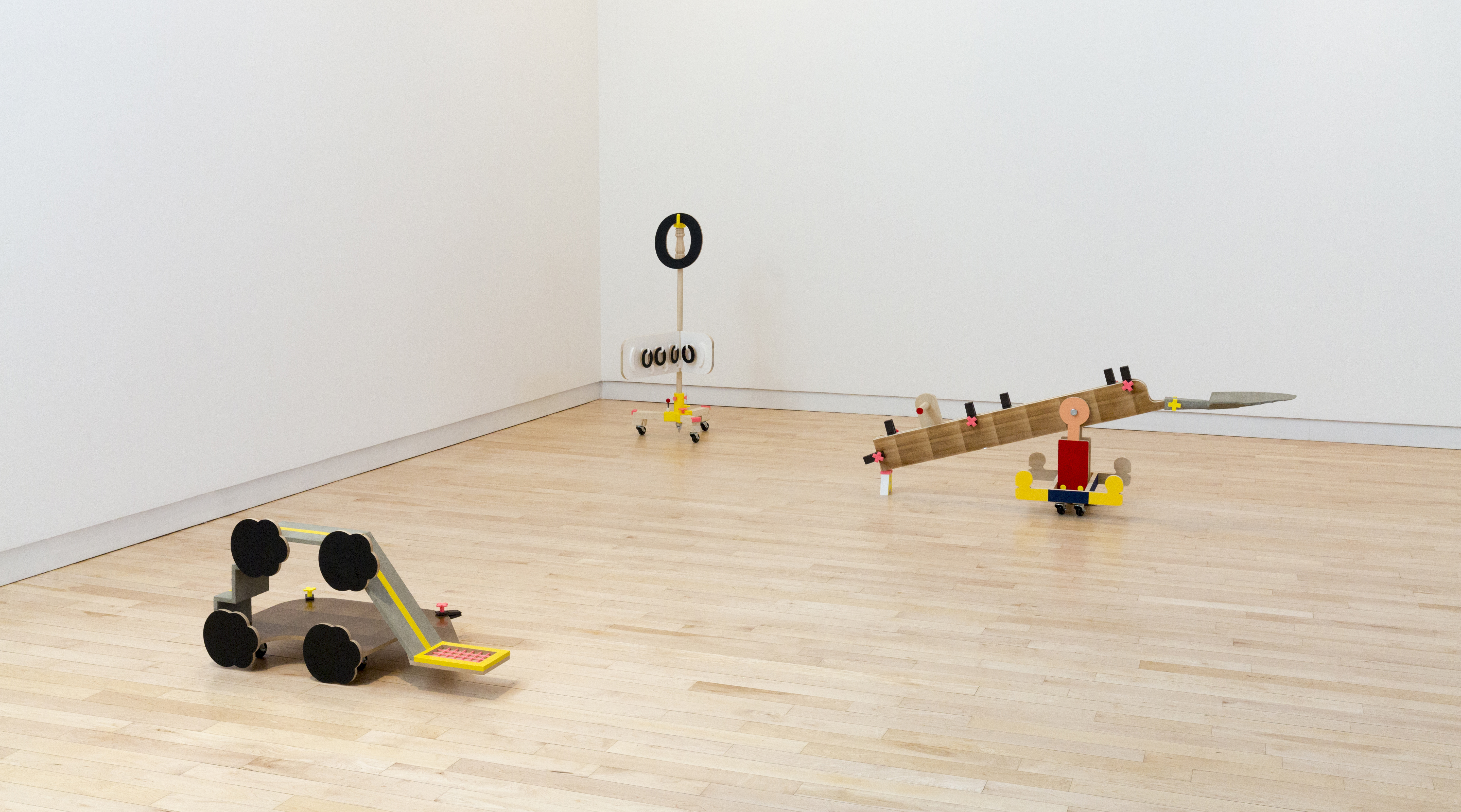
work included in the installation

O(0,0,0,0)
2021
3D printed PLA, MDF, wood, casters
20 x 45 x 10in
2021
3D printed PLA, MDF, wood, casters
20 x 45 x 10in
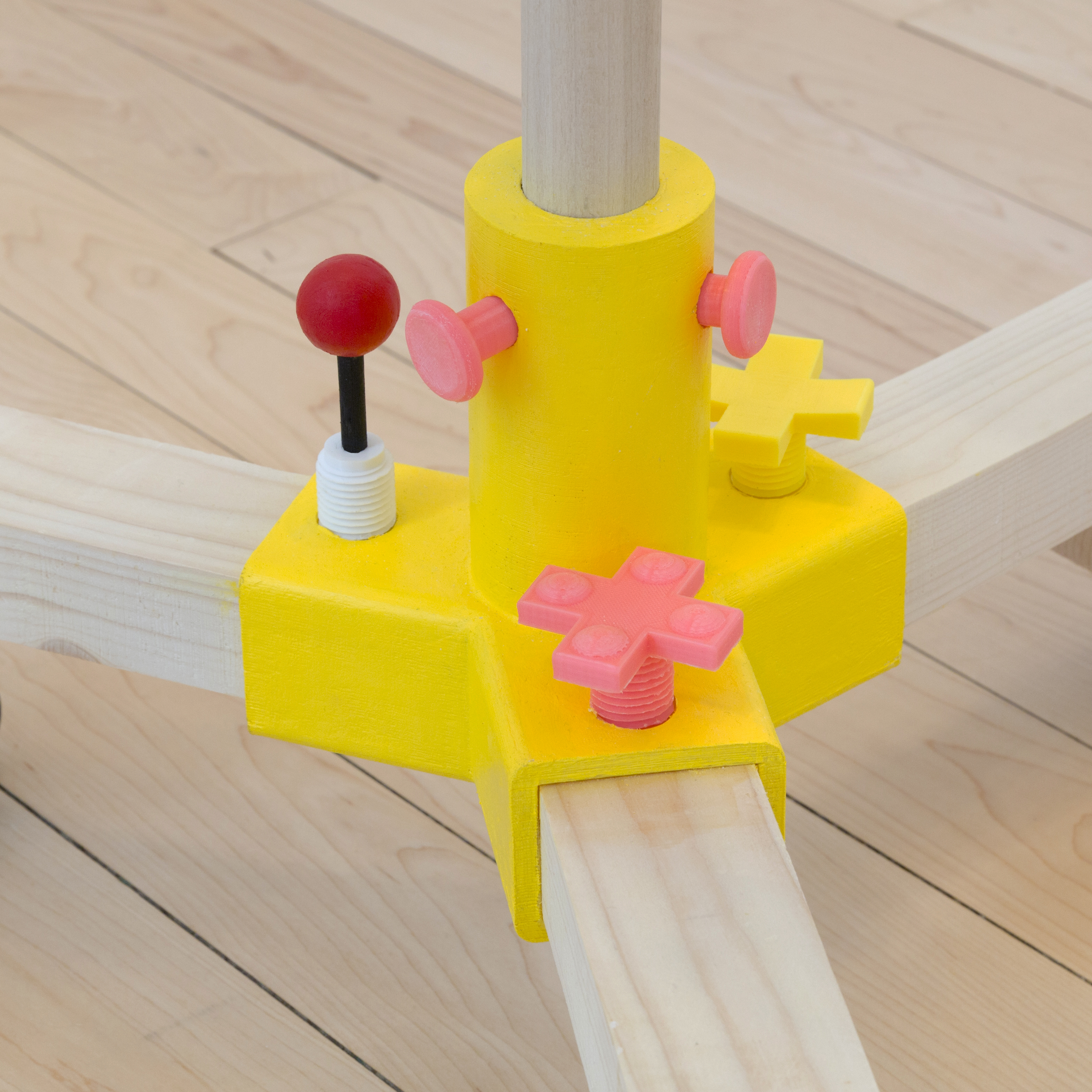
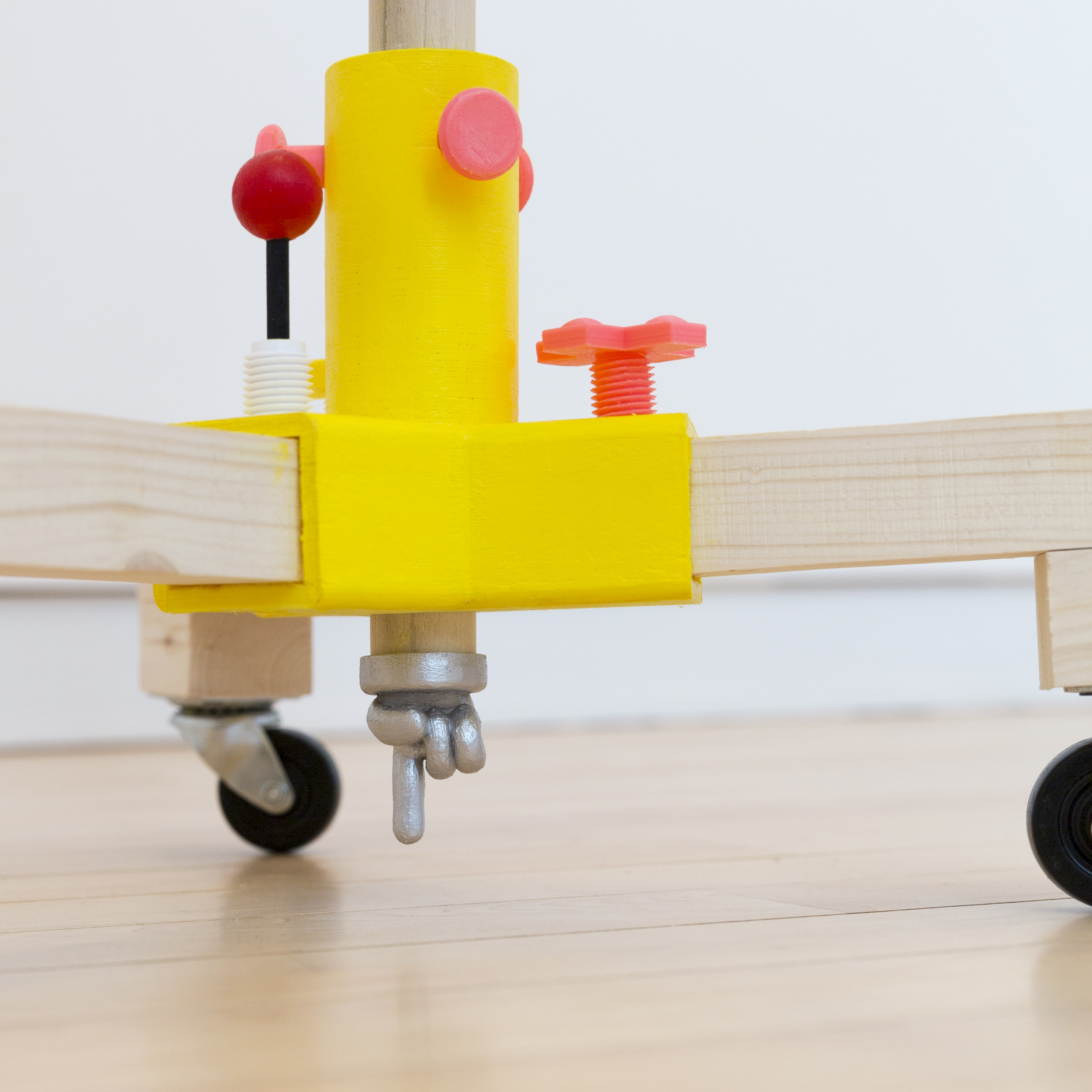

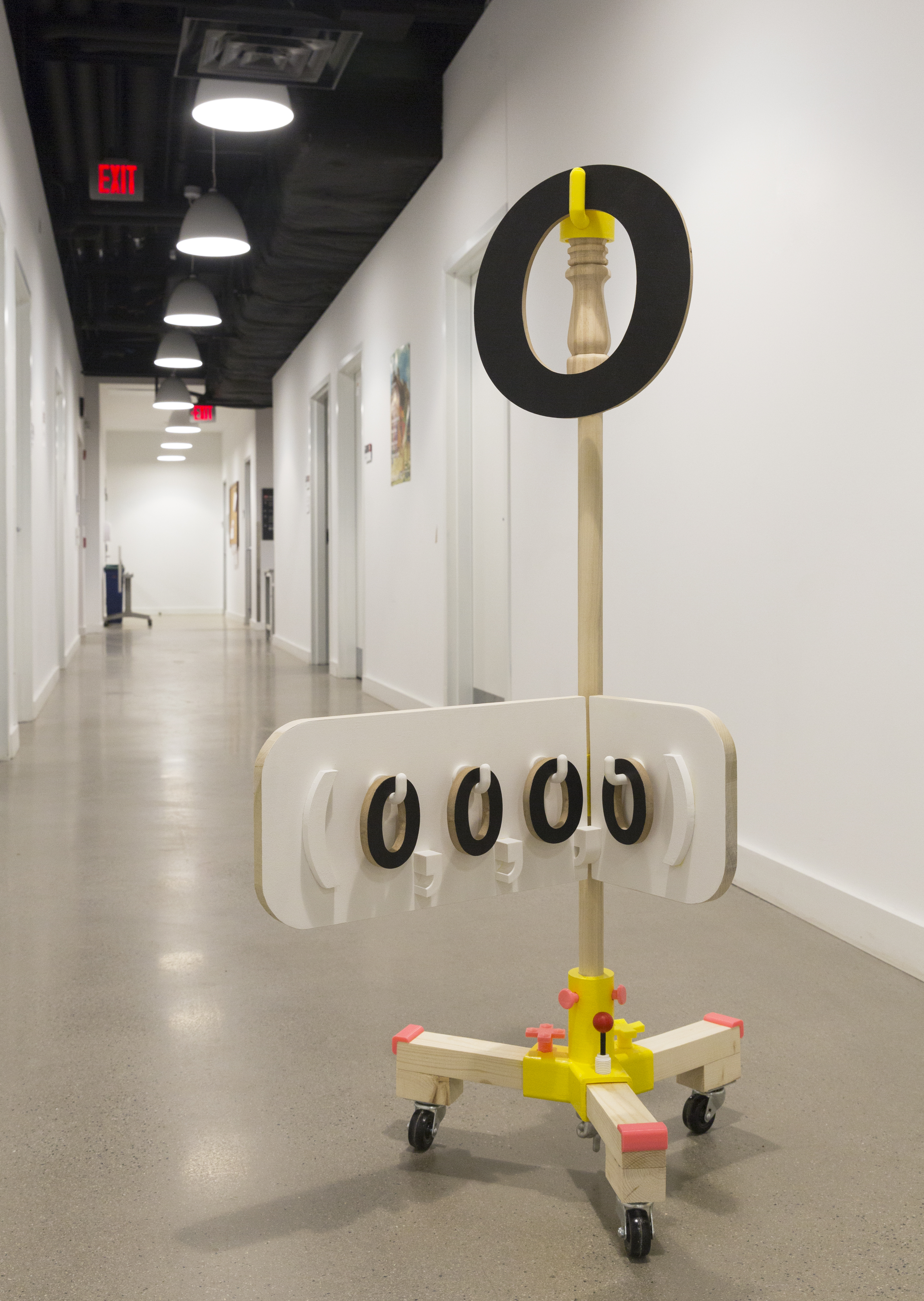

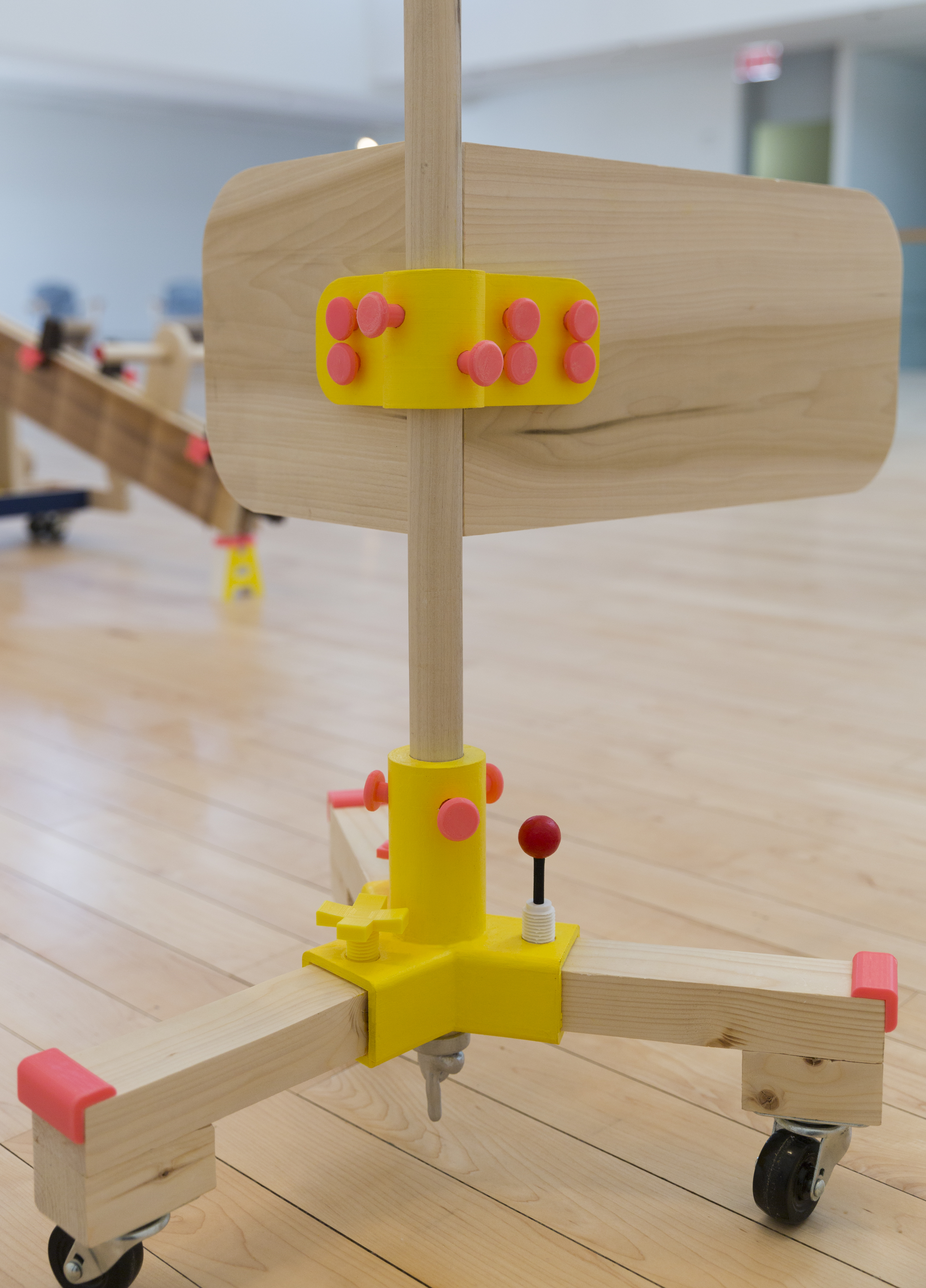

see shovel saw
2021
3D printed PLA, wood pattern printed on clear acetate, cement, MDF, wood, bolt, casters
72 x 24 x 18in
2021
3D printed PLA, wood pattern printed on clear acetate, cement, MDF, wood, bolt, casters
72 x 24 x 18in



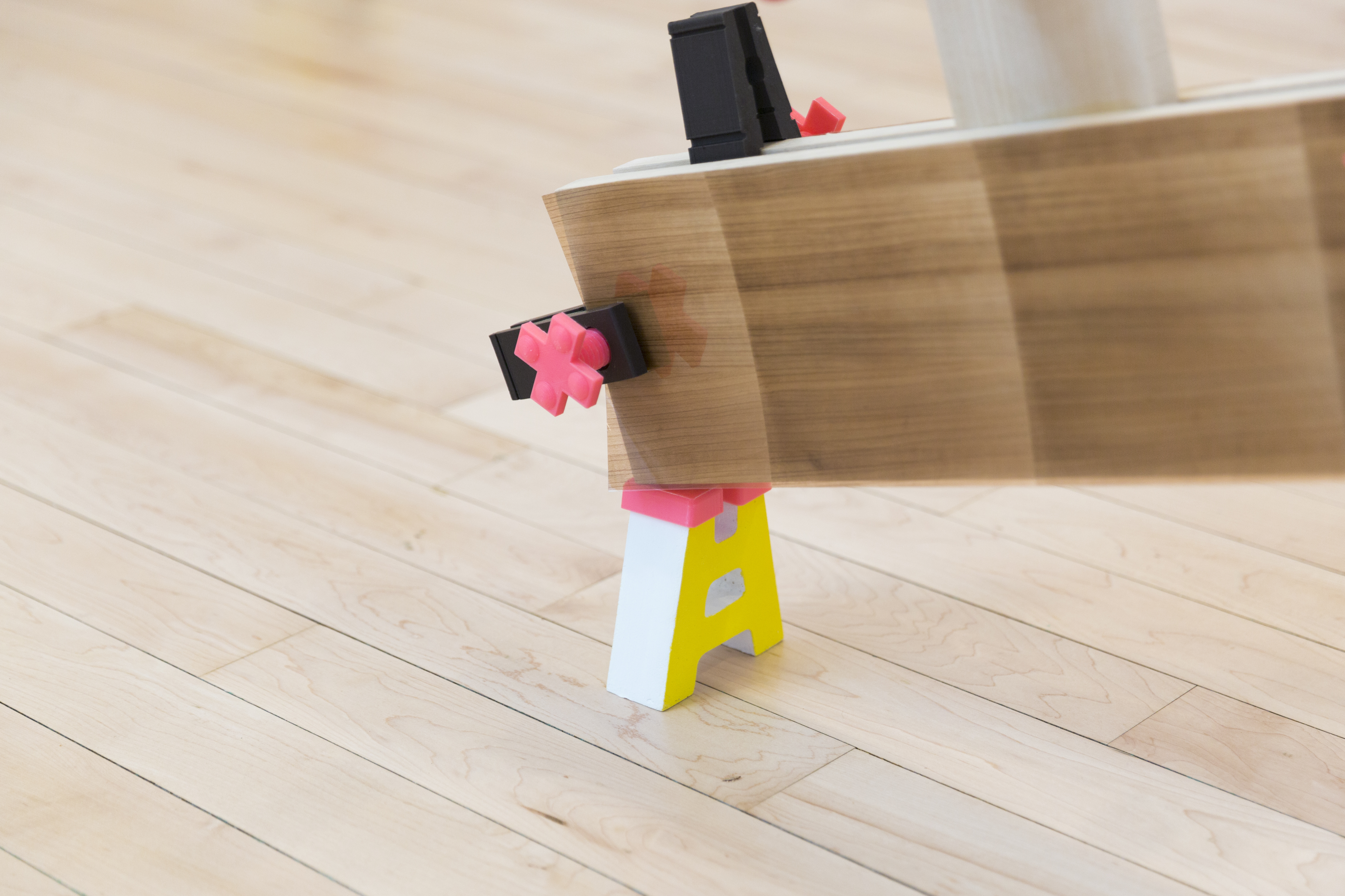
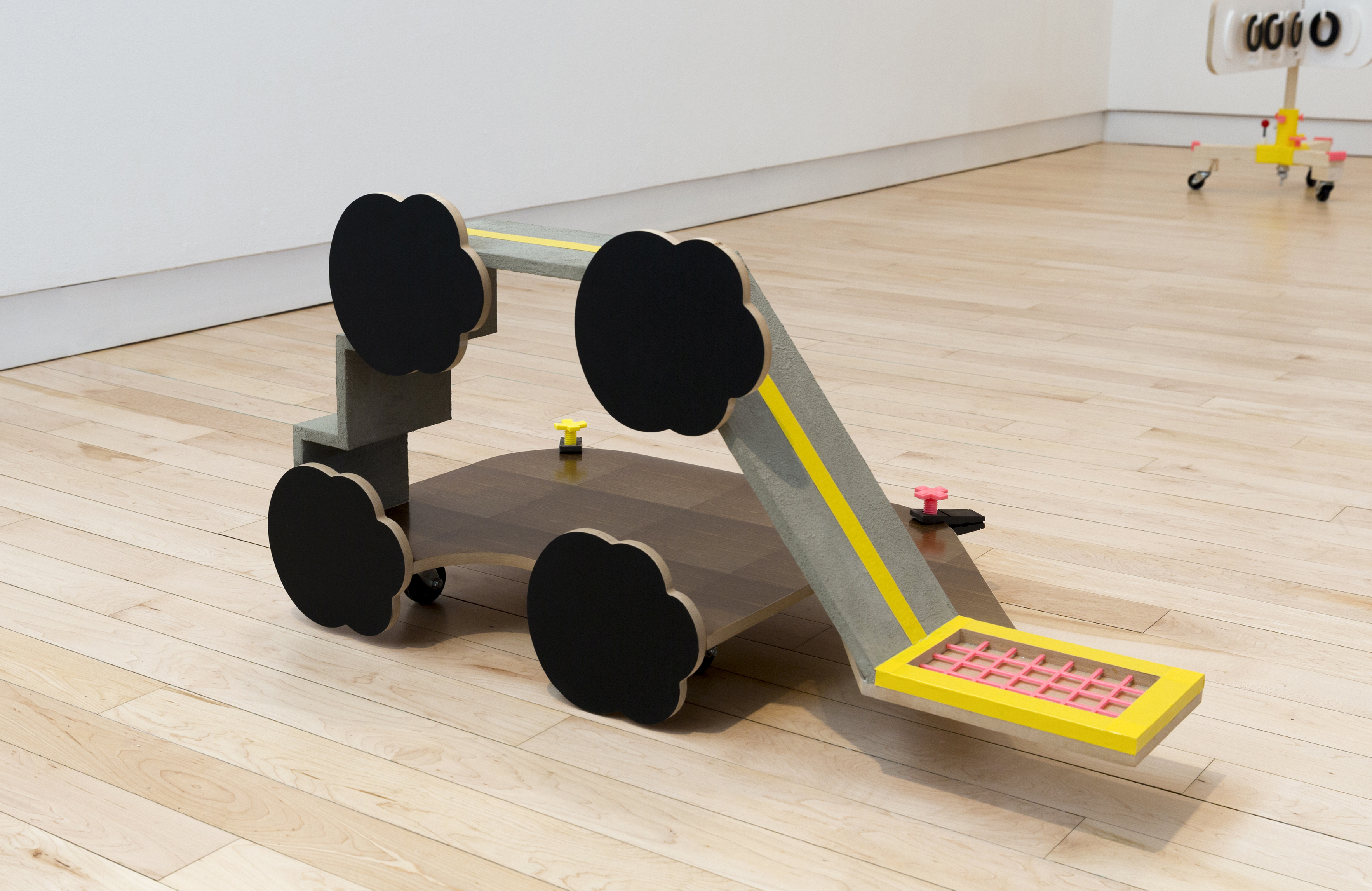
i am sorry but the elephant slide slid.
2021
3D printed PLA, wood pattern printed on clear acetate, cement, MDF, wood, duct tape, casters
36 x 18 x 18in
2021
3D printed PLA, wood pattern printed on clear acetate, cement, MDF, wood, duct tape, casters
36 x 18 x 18in

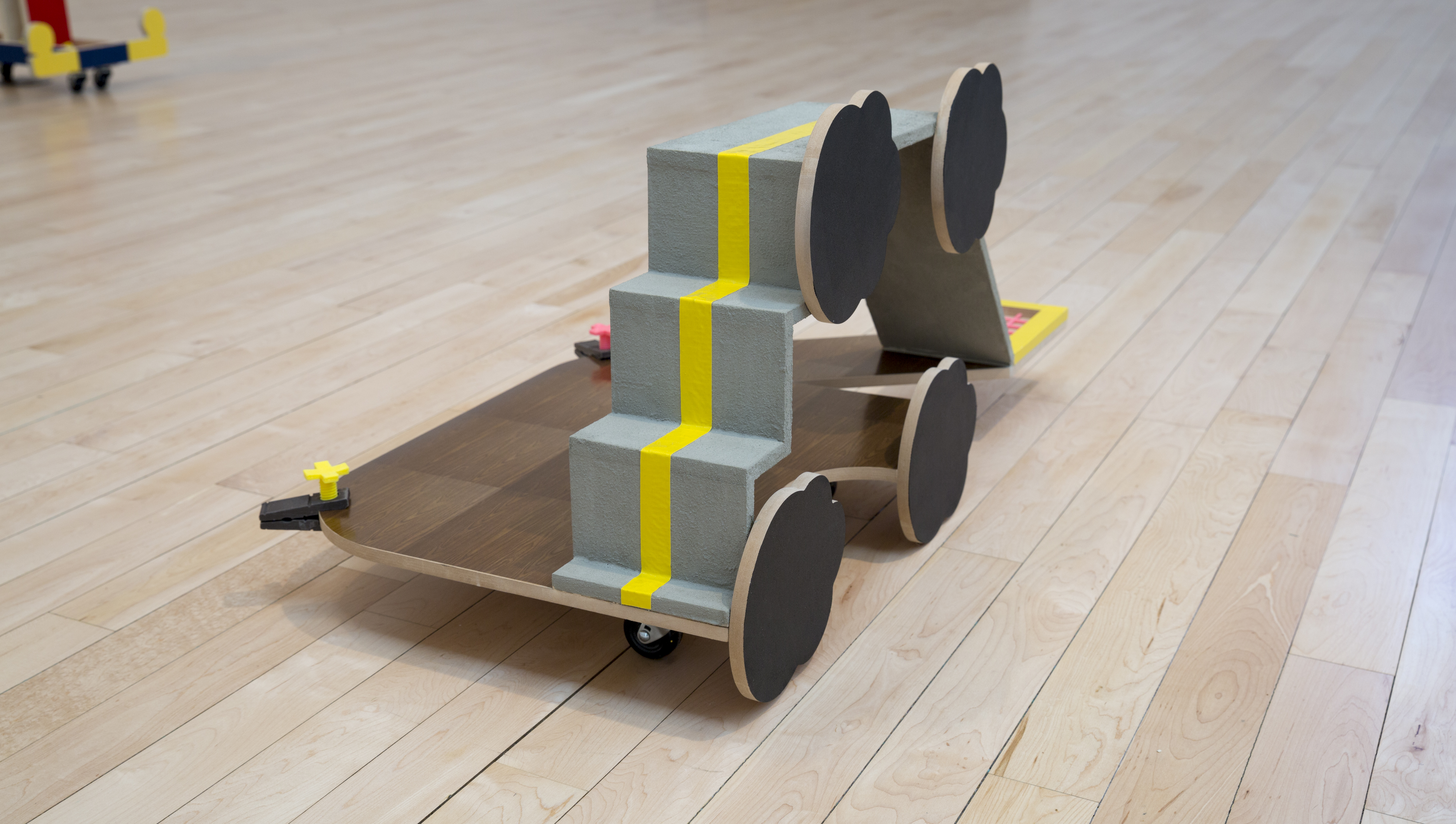
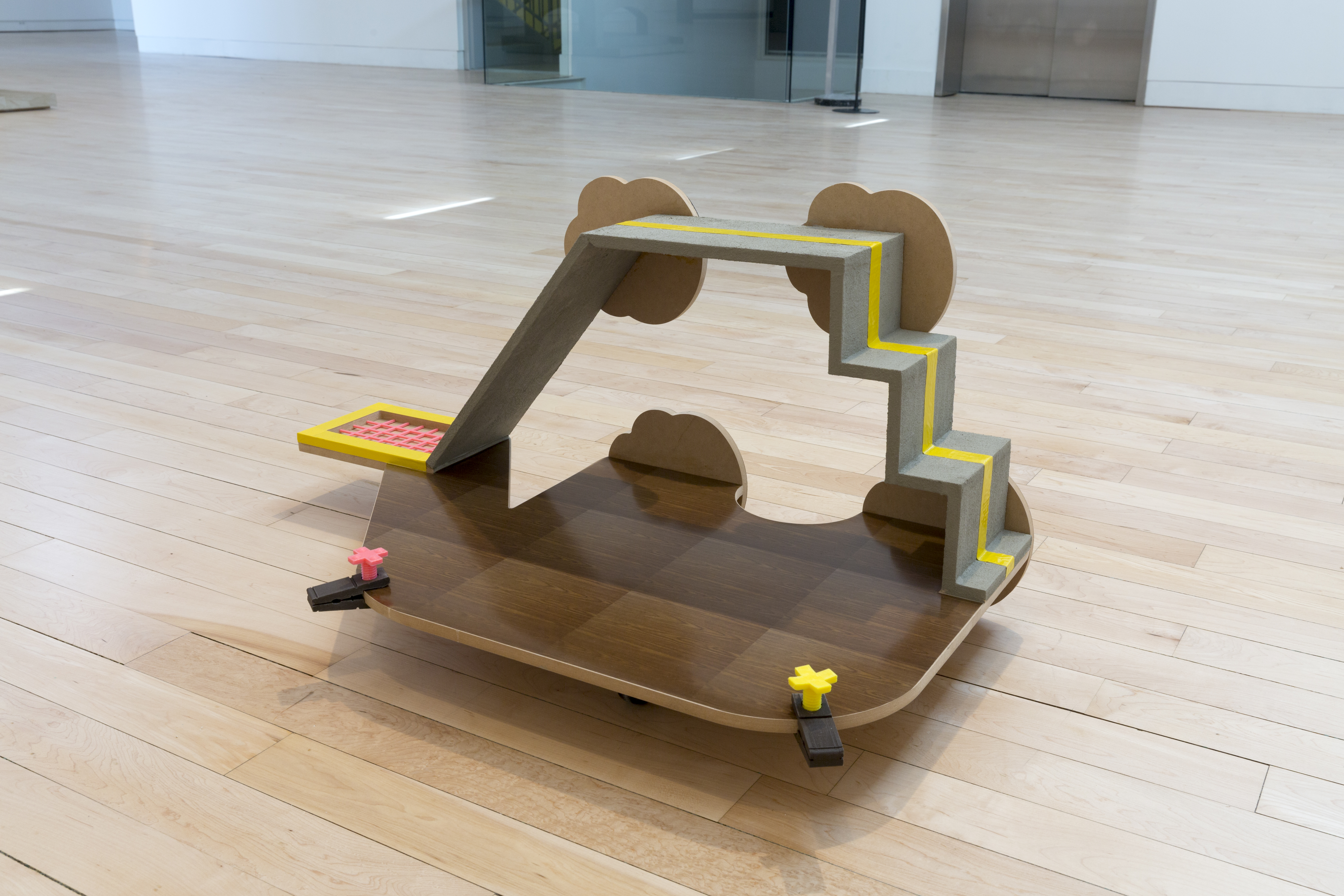
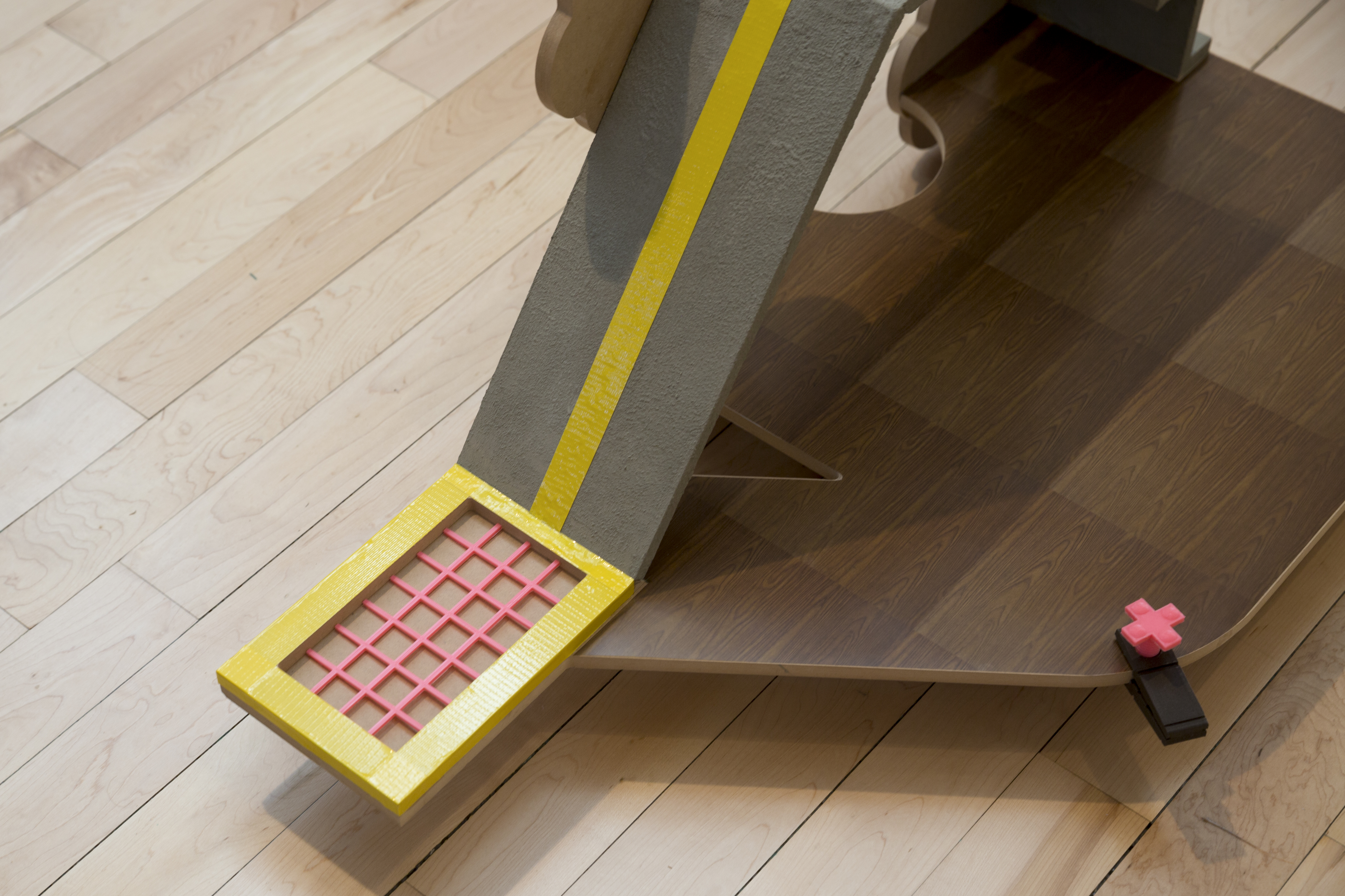

neither the flower nor the bird admits their insatiability.
2021
3D printed wood PLA, 3D printed general PLA, wood pattern printed on clear acetate, fence drawing printed on clear acetate, cement, duct tape, MDF, wood, wheels, motor, tube, water pump, glass dome, bird chirping sound.
2021
3D printed wood PLA, 3D printed general PLA, wood pattern printed on clear acetate, fence drawing printed on clear acetate, cement, duct tape, MDF, wood, wheels, motor, tube, water pump, glass dome, bird chirping sound.
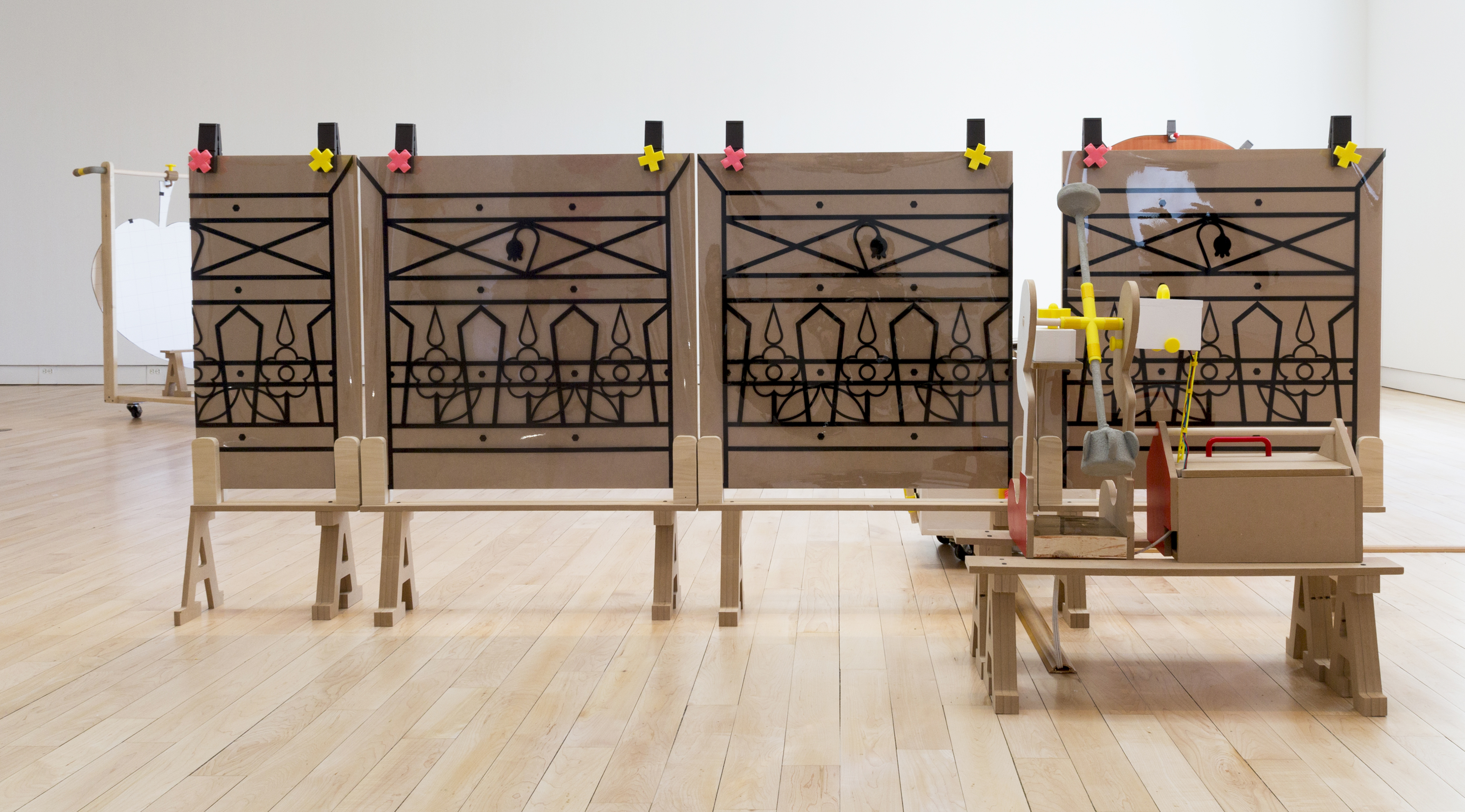
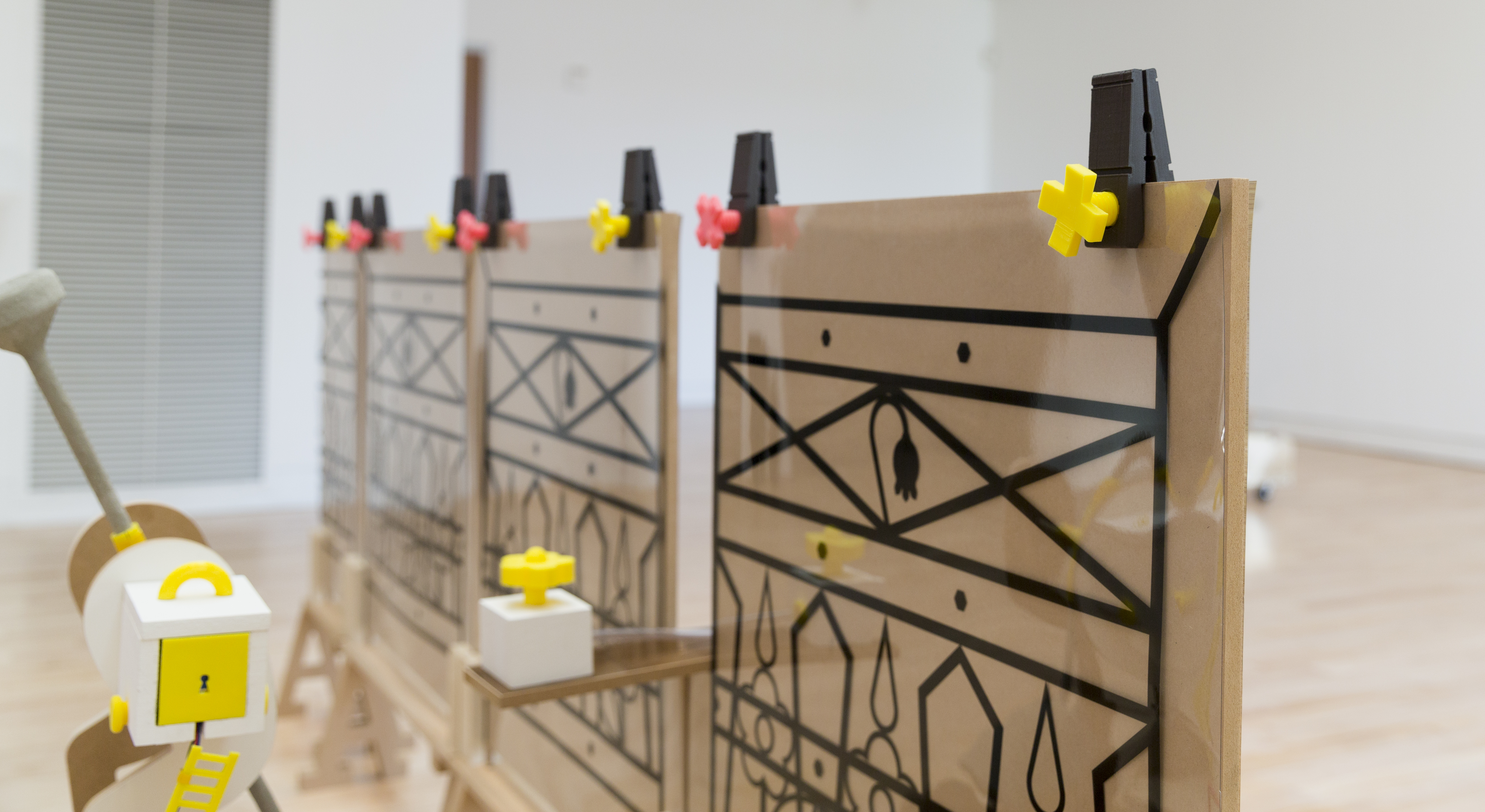
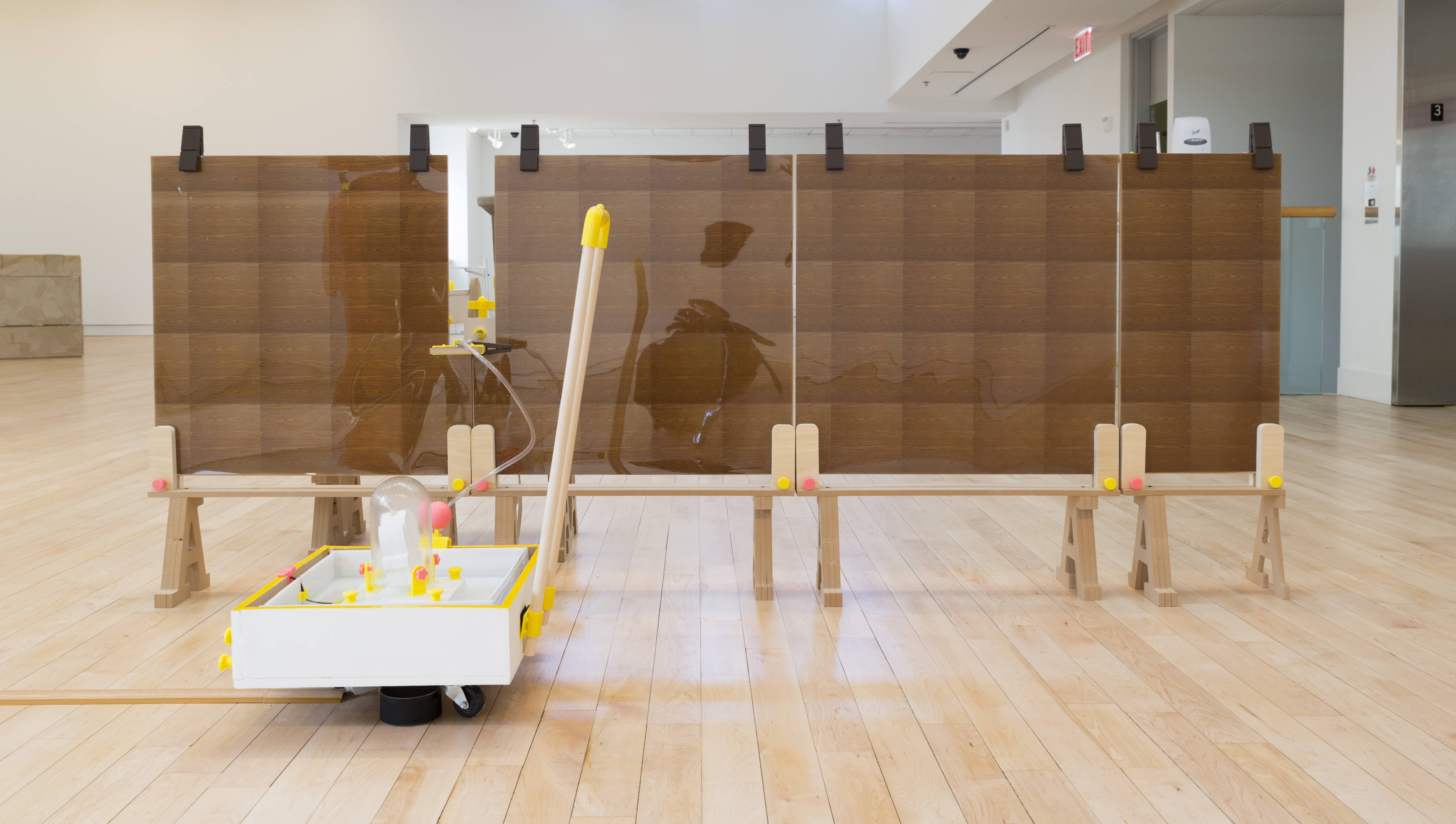
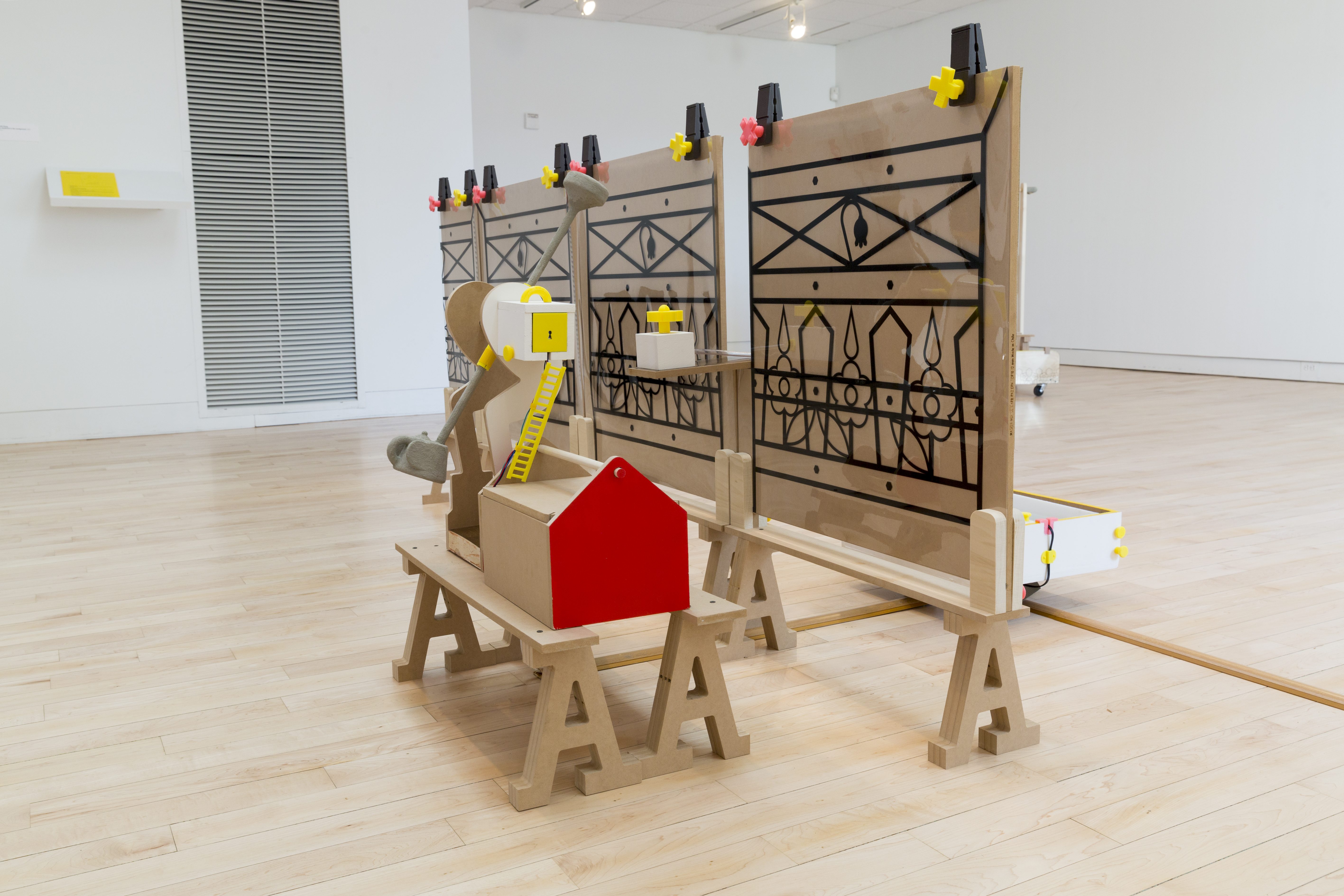
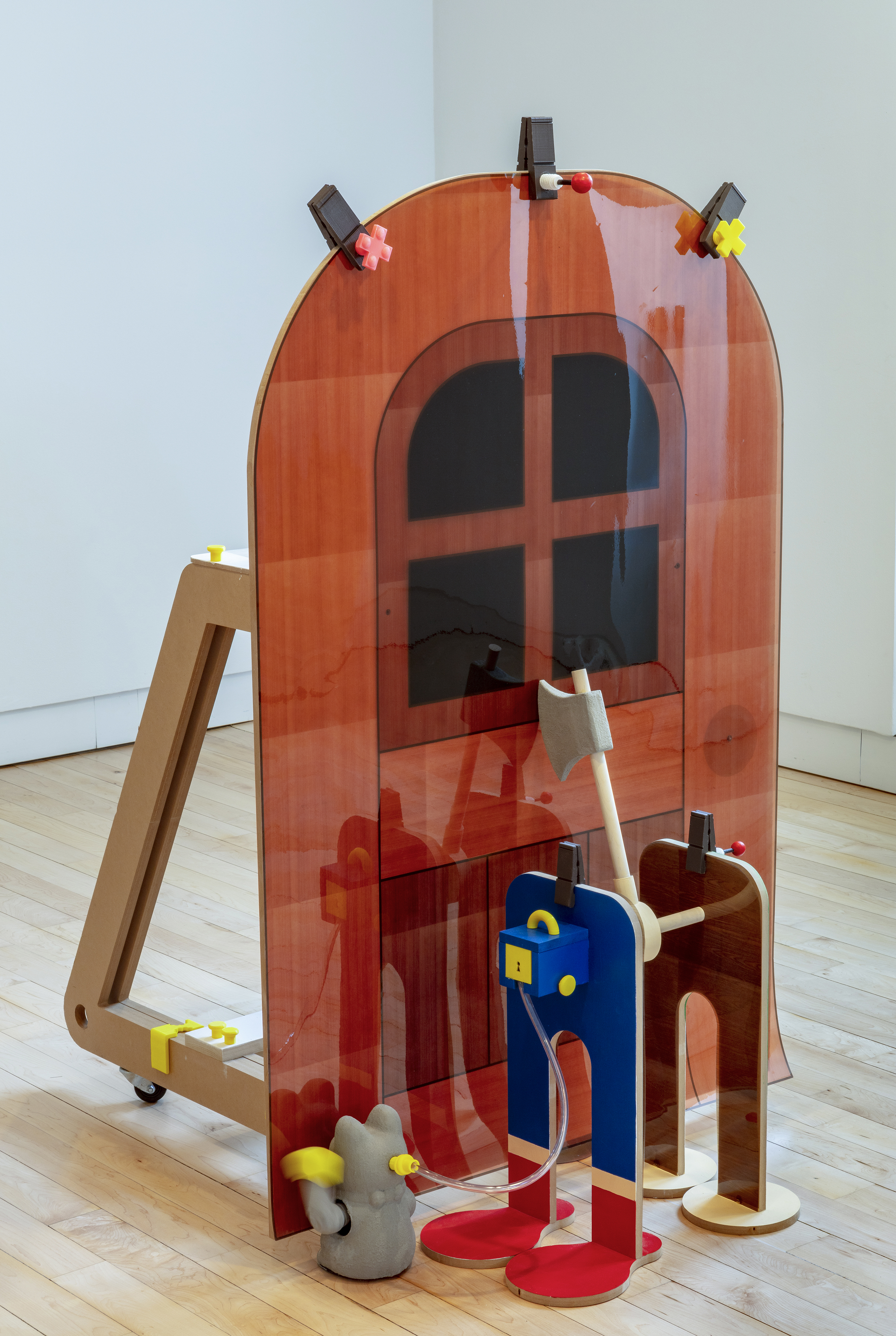
“then I’ll huff, and I’ll puff.”
2021
3D printed PLA, door drawing printed on clear acetate, grid drawing printed on clear acetate, cement, MDF, wood, tube, modified motorized maneki-neko, casters
36 x 52 x 48in
2021
3D printed PLA, door drawing printed on clear acetate, grid drawing printed on clear acetate, cement, MDF, wood, tube, modified motorized maneki-neko, casters
36 x 52 x 48in

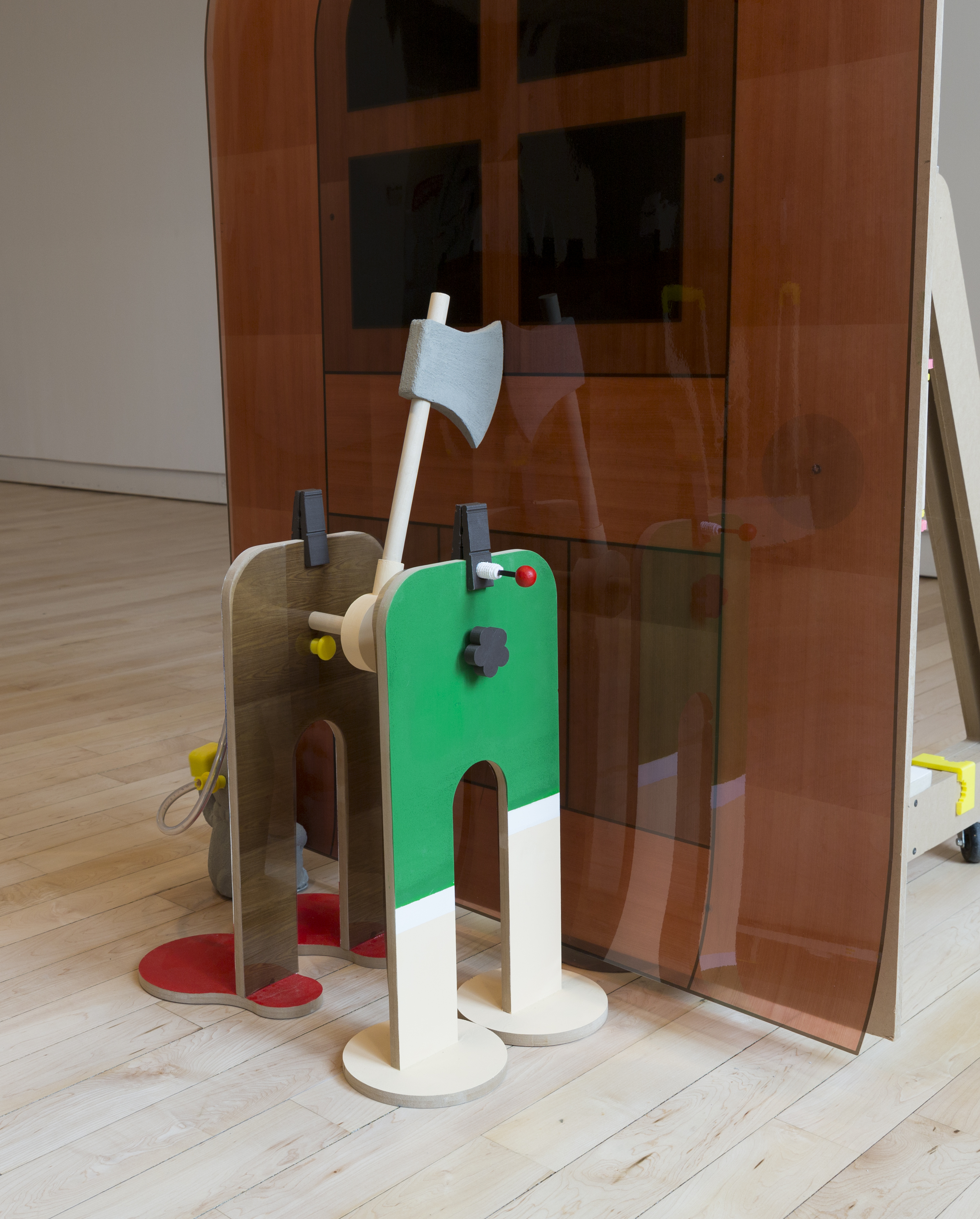
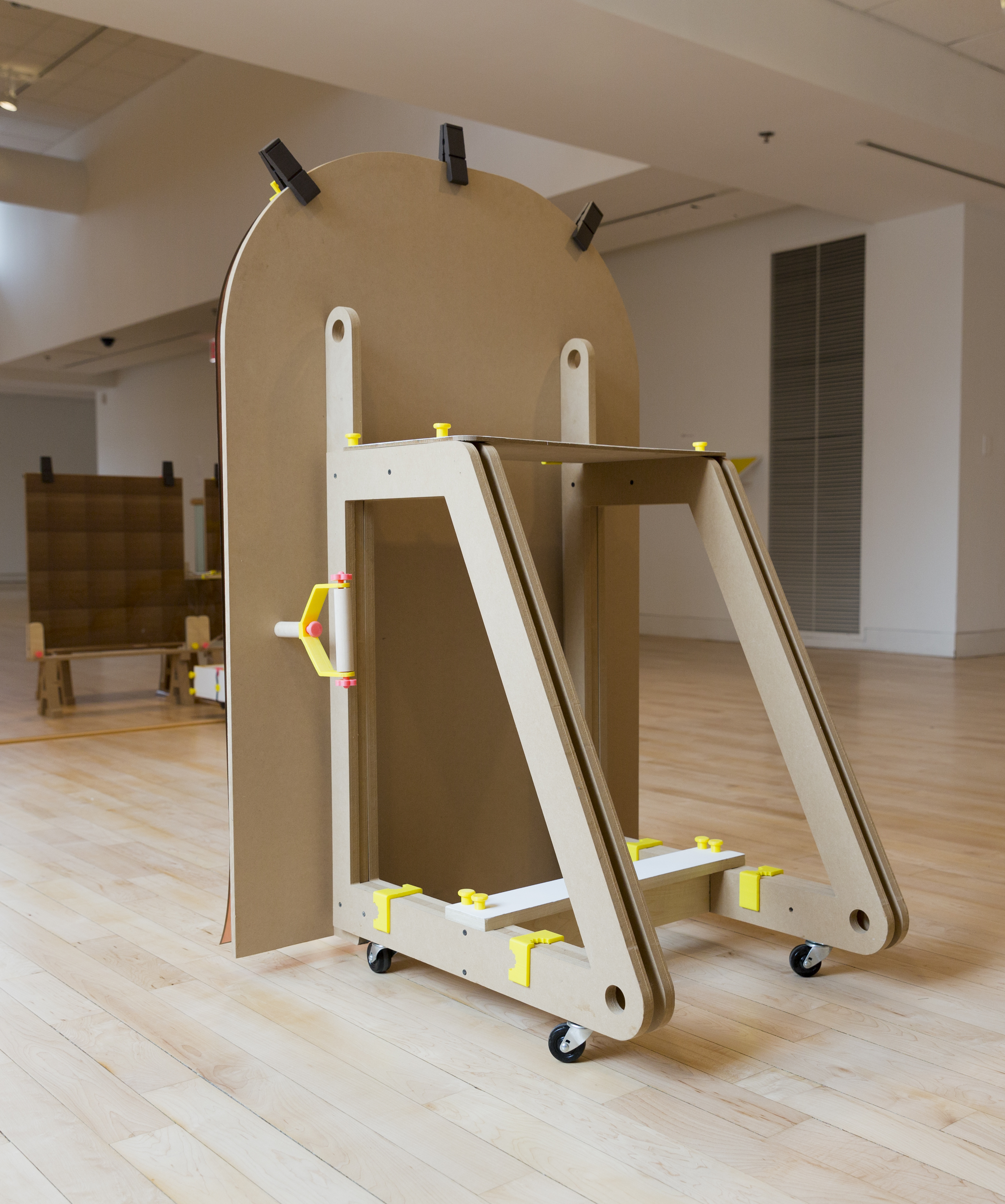
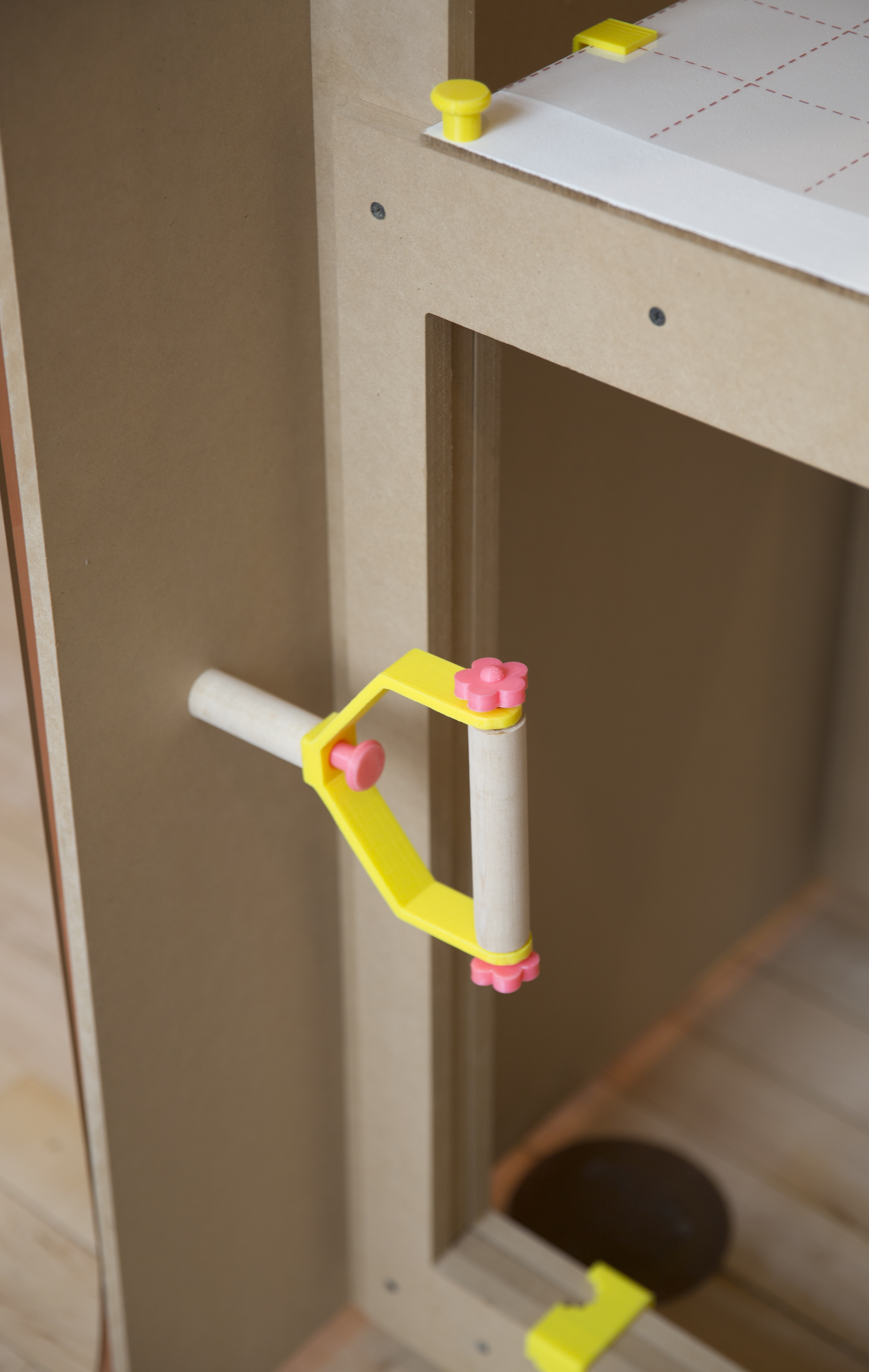

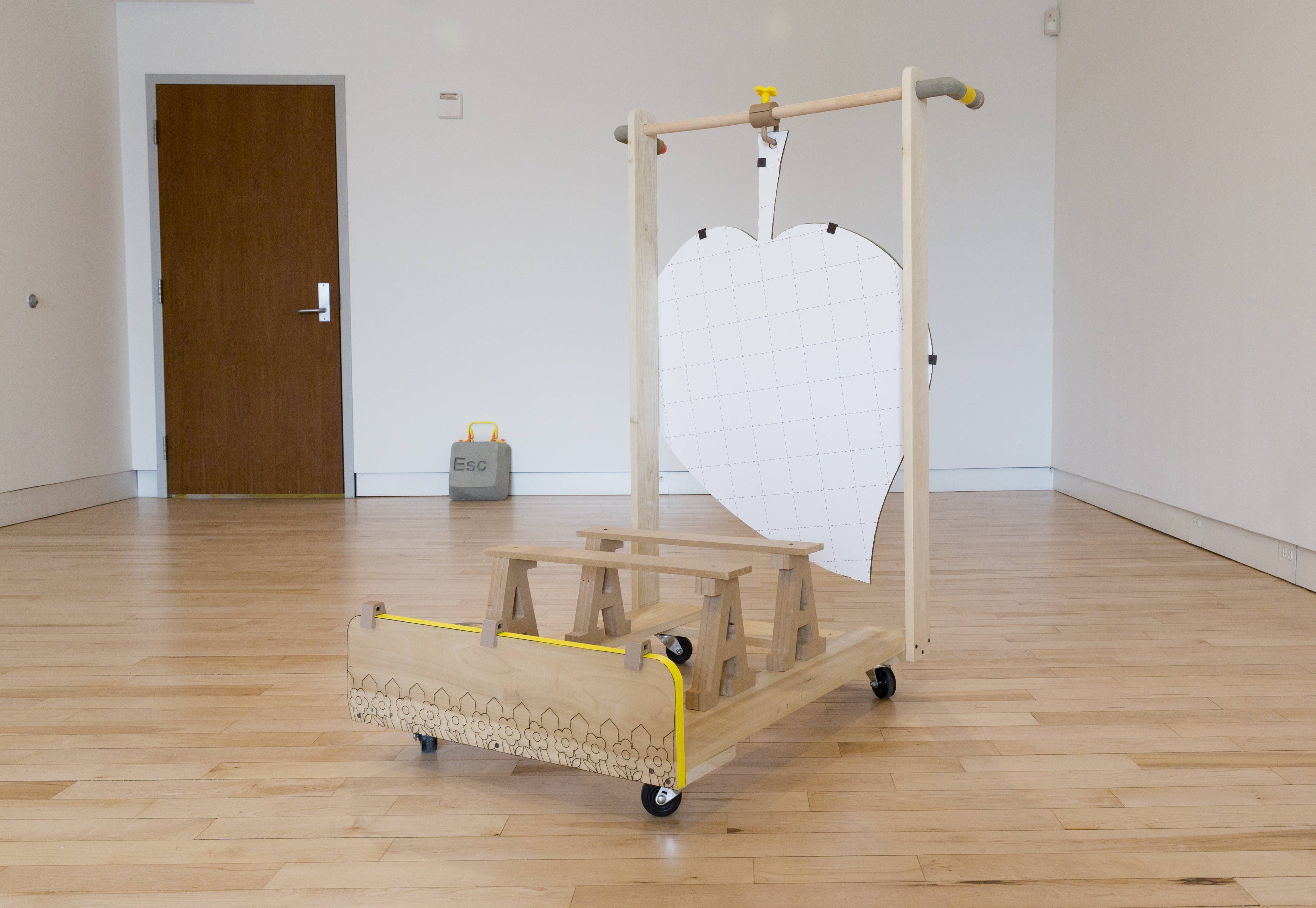
11*door + 3*elevator =
2021
3D printed PLA, duct tape, leaf drawing printed on clear acetate, flower drawing prined on clear acetate, grid drawing printed on paper, cardboard, cement, MDF, wood, caster
Before I made this group of sculptures, I realized that, in order to create these works in the woodshop, bring them to my studio, and eventually take them to this gallery, I need to make sure they are able to pass through 11 doors in various sizes and can be fit into 3 different elevators. Therefore, I made this cart as a tool that allows me to size my works and thus to move them smoothly through all these doors and elevators.
2021
3D printed PLA, duct tape, leaf drawing printed on clear acetate, flower drawing prined on clear acetate, grid drawing printed on paper, cardboard, cement, MDF, wood, caster
Before I made this group of sculptures, I realized that, in order to create these works in the woodshop, bring them to my studio, and eventually take them to this gallery, I need to make sure they are able to pass through 11 doors in various sizes and can be fit into 3 different elevators. Therefore, I made this cart as a tool that allows me to size my works and thus to move them smoothly through all these doors and elevators.
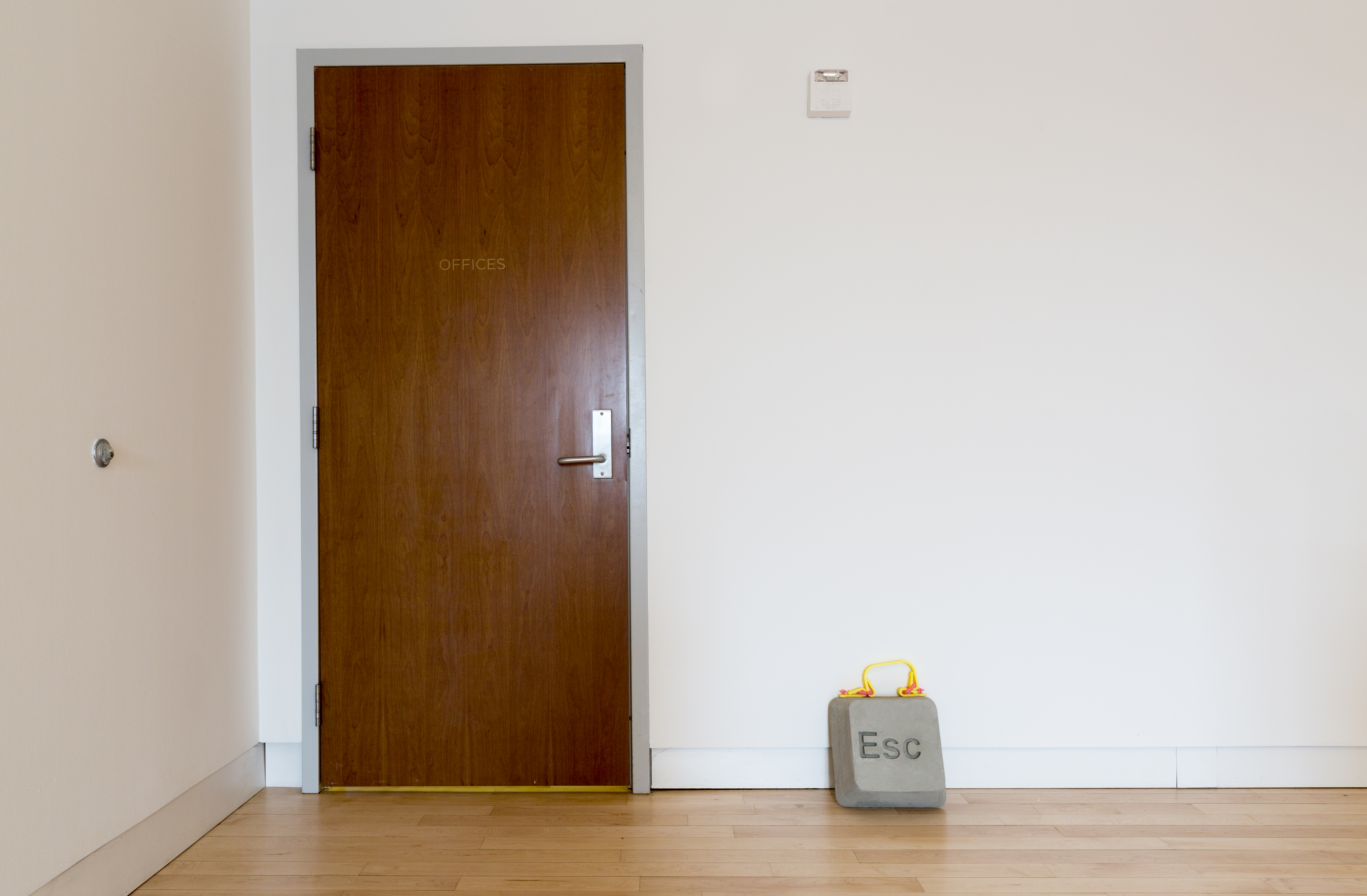
i’ve got a portable esc
2021
3D printed PLA, cement, foam.
2021
3D printed PLA, cement, foam.
